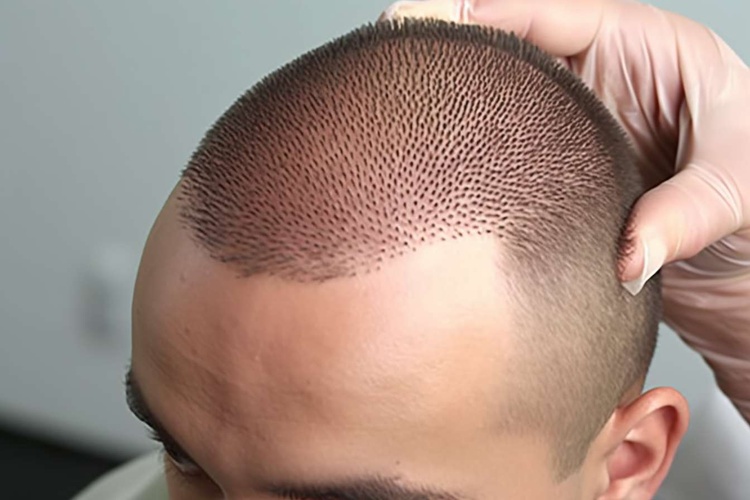Advanced Solutions for Hair Restoration in 2025
Hair transplantation has evolved significantly in recent years, offering hope to millions experiencing hair loss worldwide. As we approach 2025, innovative techniques and technologies are transforming this field, providing more natural-looking results with reduced recovery times. Understanding these advancements can help individuals make informed decisions about addressing their hair loss concerns.

Hair loss affects millions of people globally, impacting self-confidence and psychological well-being. Modern hair transplantation offers a permanent solution for many suffering from pattern baldness or other forms of hair loss. As we look toward 2025, significant innovations continue to reshape the landscape of hair restoration, making procedures more effective, less invasive, and more accessible than ever before.
Understanding Hair Loss: Options and Insights for 2025
Hair loss can result from various factors, including genetics, hormonal changes, medical conditions, and aging. By 2025, diagnostic technologies are expected to advance significantly, allowing for more personalized treatment approaches. Artificial intelligence-driven scalp analysis will likely become standard, helping practitioners identify the underlying causes of hair loss with greater precision.
The classification of hair loss patterns is also evolving beyond the traditional Norwood scale for men and Ludwig scale for women. More nuanced classification systems are emerging that account for diverse ethnic hair types and mixed-pattern hair loss. This refined understanding will enable more customized treatment plans that address specific needs rather than applying one-size-fits-all approaches.
Non-surgical interventions continue to develop alongside transplantation options. These include pharmaceutical treatments like next-generation minoxidil formulations, improved finasteride alternatives with fewer side effects, and novel peptide therapies that stimulate follicular regeneration. These treatments may serve as complementary approaches to transplantation or as standalone options for early-stage hair loss.
Hair Restoration in 2025: Treatments and Trends
By 2025, hair transplantation techniques will likely continue refining the current gold standards while introducing new innovations. The Follicular Unit Extraction (FUE) method is expected to see significant advancements with automated systems achieving greater precision and reducing procedure times. Robotic FUE systems will incorporate more sophisticated algorithms to optimize graft selection and placement angles, resulting in more natural hairlines.
Stem cell therapy represents one of the most promising frontiers in hair restoration. Research is progressing toward using a patient’s own stem cells to regenerate hair follicles. Early clinical trials suggest that injecting cultured dermal papilla cells derived from a patient’s healthy follicles may stimulate new hair growth in thinning areas without requiring traditional transplantation.
Platelet-rich plasma (PRP) therapy is also evolving, with standardized protocols emerging that optimize growth factor concentration and application methods. By 2025, combination approaches that integrate PRP with other treatments may become standard practice, potentially enhancing graft survival rates and stimulating native hair growth simultaneously.
The Future of Hair Loss Solutions: What to Expect
Genetic therapies represent the cutting edge of hair loss treatment research. Scientists are investigating ways to modify the expression of genes associated with androgenetic alopecia. While still experimental, these approaches aim to address the root causes of pattern baldness rather than simply treating symptoms. By 2025, early clinical applications of gene therapy for hair loss may begin entering specialized treatment centers.
3D bioprinting technology shows promise for creating hair follicle germs that can be implanted to grow new hair. This technology could potentially solve the limited donor supply issue that currently restricts traditional transplantation. Research teams in several countries have demonstrated successful follicle printing in laboratory settings, with human trials potentially beginning by 2025.
Telehealth is also transforming the hair restoration field, with virtual consultations becoming increasingly sophisticated. Advanced imaging technologies allow specialists to assess patients remotely with high precision. This trend will likely accelerate, making expert opinions accessible to patients regardless of geographic location.
Modern Techniques and Procedures
The two primary hair transplantation techniques—Follicular Unit Transplantation (FUT) and Follicular Unit Extraction (FUE)—continue to evolve. FUT involves removing a strip of scalp containing healthy follicles, while FUE extracts individual follicular units directly from the donor area. By 2025, FUE is expected to dominate the market due to its minimally invasive nature and reduced scarring.
Direct Hair Implantation (DHI) represents an advancement of the FUE technique, using specialized implanter pens that extract and implant follicles in one step, minimizing the time grafts spend outside the body. This method allows for more precise control over the angle, direction, and depth of implantation, creating more natural-looking results.
The concept of follicular unit excision has expanded to include body hair transplantation (BHT) for patients with limited scalp donor supply. Refinements in harvesting techniques now allow surgeons to effectively utilize hair from the beard, chest, and other body areas as supplementary donor sources, though these hairs may have different characteristics than scalp hair.
Cost and Provider Comparison for Restoration Procedures
Hair restoration costs vary significantly based on technique, geographic location, clinic reputation, and the extent of treatment required. Understanding these variations can help patients make informed decisions when considering this investment.
| Technique | Average Cost Range (2025 Projection) | Provider Examples | Key Considerations |
|---|---|---|---|
| FUE | $4,000-$15,000 | Bernstein Medical, Bosley | Less scarring, longer procedure time |
| FUT | $3,500-$12,000 | Hair Club, Ziering Medical | More grafts per session, linear scar |
| DHI | $5,000-$18,000 | DHI Global, Vera Clinic | Higher precision, higher cost per graft |
| Robotic FUE | $7,000-$20,000 | Restoration Robotics centers | Consistent extraction, premium pricing |
| Stem Cell Therapy | $3,000-$8,000 per session | Advanced Hair Institutes | Emerging technology, may require multiple sessions |
Prices, rates, or cost estimates mentioned in this article are based on the latest available information but may change over time. Independent research is advised before making financial decisions.
Patients should consider that the total cost often depends on the number of grafts needed rather than a flat fee. Most clinics charge per graft, with rates typically ranging from $3-$9 per graft depending on the technique and provider. Additionally, geographic location significantly impacts pricing, with procedures in major metropolitan areas and countries known for medical tourism often varying by 30-50% from global averages.
Recovery and Results Expectations
Recovery timelines for restoration procedures continue to improve with advancing techniques. Most patients can return to non-strenuous activities within 2-3 days following FUE procedures, though complete healing takes longer. The initial transplanted hair typically sheds within 2-3 weeks post-procedure—a normal part of the process called “shock loss.”
Visible growth begins around 3-4 months post-procedure, with significant results becoming apparent at 6-9 months. Full results typically manifest between 12-18 months after surgery. By 2025, enhanced post-operative protocols incorporating specialized light therapy and growth factor treatments may accelerate this timeline somewhat, though the biological hair growth cycle remains a fundamental constraint.
Patient satisfaction rates continue to improve as techniques advance, with most reputable clinics reporting 85-95% satisfaction among properly selected candidates. Managing expectations remains crucial, as results depend on donor hair quality, recipient area characteristics, and individual healing responses.
This article is for informational purposes only and should not be considered medical advice. Please consult a qualified healthcare professional for personalized guidance and treatment.



